Port Augusta: Where the Desert Meets the Sea
Port Augusta gets a mixed rap from travellers — too industrial, too busy, too rough around the edges. But like most places we’ve been warned about, once you slow down and take a proper look, it turns out there’s a lot to see.
We’ve stayed here twice — once out at Spear Creek, tucked in against the southern Flinders Ranges, and again at Pandurra Station, a working property west of town. Both were brilliant spots in their own right: Spear Creek for its rugged hills, campfire sunsets and roos grazing at dusk, and Pandurra for the wide horizons, old station charm, and a peaceful night sky that stretched forever.
Each visit gave us the space to explore Port Augusta properly, and it’s well worth doing. The town’s split personality — part industrial hub, part gateway to the outback — means you get the best of both worlds. There’s the sparkle of the gulf on one side, the red dust of the desert on the other, and plenty in between.
Our first stop was the Australian Arid Lands Botanic Garden, easily one of the best free attractions in South Australia. It’s a masterpiece of outback landscaping, blending native plants with clever design and sweeping views over the Spencer Gulf. The café does a solid lunch, but the real treat is the garden itself — wander through trails lined with desert wattles, saltbush, and flowering shrubs that thrive where nothing else would. We left with dust on our boots and a camera full of colour.
The Wadlata Outback Centre came next — part museum, part time tunnel, and packed with local history. It’s the perfect stop to get a sense of the vastness beyond town, tracing the early explorers, the Aboriginal trade routes, and the stories that link the coast to the red centre. The giant steel wedge-tailed eagle out front makes it hard to miss.
We also spent time at the Port Augusta Wharf Precinct, where the old bridge, fishing jetty and coastal walks remind you this was once a busy inland port. Watching the light shift over the water with the Flinders Ranges in the background, it’s easy to see why artists and photographers love this view.
A short drive out of town took us to Matthew Flinders Lookout on Red Cliff, where the explorer himself once climbed to survey the gulf. From up there, you can see the point where the desert finally meets the sea — a contrast so sharp it feels almost unreal.
There’s plenty more if you’ve got time:
The Water Tower Lookout, for panoramic views of the town and gulf.
Australian Arid Lands Café, great for local produce and native-flavoured treats.
Mount Remarkable National Park and Warren Gorge to the south, both ideal for short walks and wildlife spotting.
Like many outback hubs, Port Augusta can look a little tough on arrival. But stay a while and the edges soften. The locals are friendly, the landscapes are striking, and the sense of space is like a reset button for the brain. It’s not just a stopover — it’s the start (or end) of something big.
If you’re into the places that others overlook, join our Travel Dispatch. We save our best stories — the ones you won’t find on the main road — for there.
Port Augusta
Known as the “Crossroads of Australia,” Port Augusta sits at the meeting point of the Stuart, Eyre, and Flinders highways. It’s the natural gateway between the southern coast and the vast deserts of central and western Australia.
How to Get There
Port Augusta is 310 km north of Adelaide via the Augusta Highway, or 230 km east of Ceduna via the Eyre Highway. All access roads are fully sealed and suitable for motorhomes and caravans.
What to See, Tours and Activities
What we did:
Explored the Australian Arid Lands Botanic Garden and walked the coastal tracks.
Wandered through the Wadlata Outback Centre and learned about the region’s explorer history.
Enjoyed nights at Spear Creek and Pandurra Station, each offering a different slice of outback life.
Other highlights you might explore:
Climb to Matthew Flinders Lookout for panoramic gulf views.
Visit the Port Augusta Cultural Centre (Yarta Purtli) for local exhibitions.
Take a short trip to Warren Gorge or Mount Remarkable National Park for hiking and wildlife.
When to Visit
The best time to visit is April to October. Summer temperatures can soar, while winter brings mild days perfect for exploring.
Final Thoughts
Port Augusta might not have the postcard polish, but it’s got substance. It’s a town of contrasts — sea and desert, steel and saltbush, grit and beauty. For us, it’s proof that the best stories often start in places people rush through.
What’s Nearby
From Port Augusta, head north into the Flinders Ranges for red rock country and ancient gorges, or west along the Eyre Highway toward Ceduna and the Nullarbor.
Want the real behind-the-scenes tales? Subscribe to our Top Secret Travel Dispatches for the stories that don’t make the map.
Fast Facts
Location: Port Augusta, South Australia
Distance: 310 km north of Adelaide
Traditional Owners: Barngarla People
Access: Fully sealed via Stuart, Eyre, and Flinders Highways
Facilities: Full town services including supermarkets, caravan parks, pubs, cafés, hospital, museums
Walking Track: Australian Arid Lands trails, coastal paths, and Matthew Flinders Lookout
Dog Friendly: Permitted at most caravan parks and designated public areas (leashed)
Best Time to Visit: April – October for mild weather
Things That Could Kill You (Probably Won’t)
A semi-serious guide to surviving Australia. Mostly common sense, occasionally luck.
Saltbush: Pretty but prickly. Don’t wear thongs off the path.
Gulf Breeze: Harmless, unless you forget your hat. Then it’s gone forever.
Industrial Charm: It’s not ugly — it’s character.








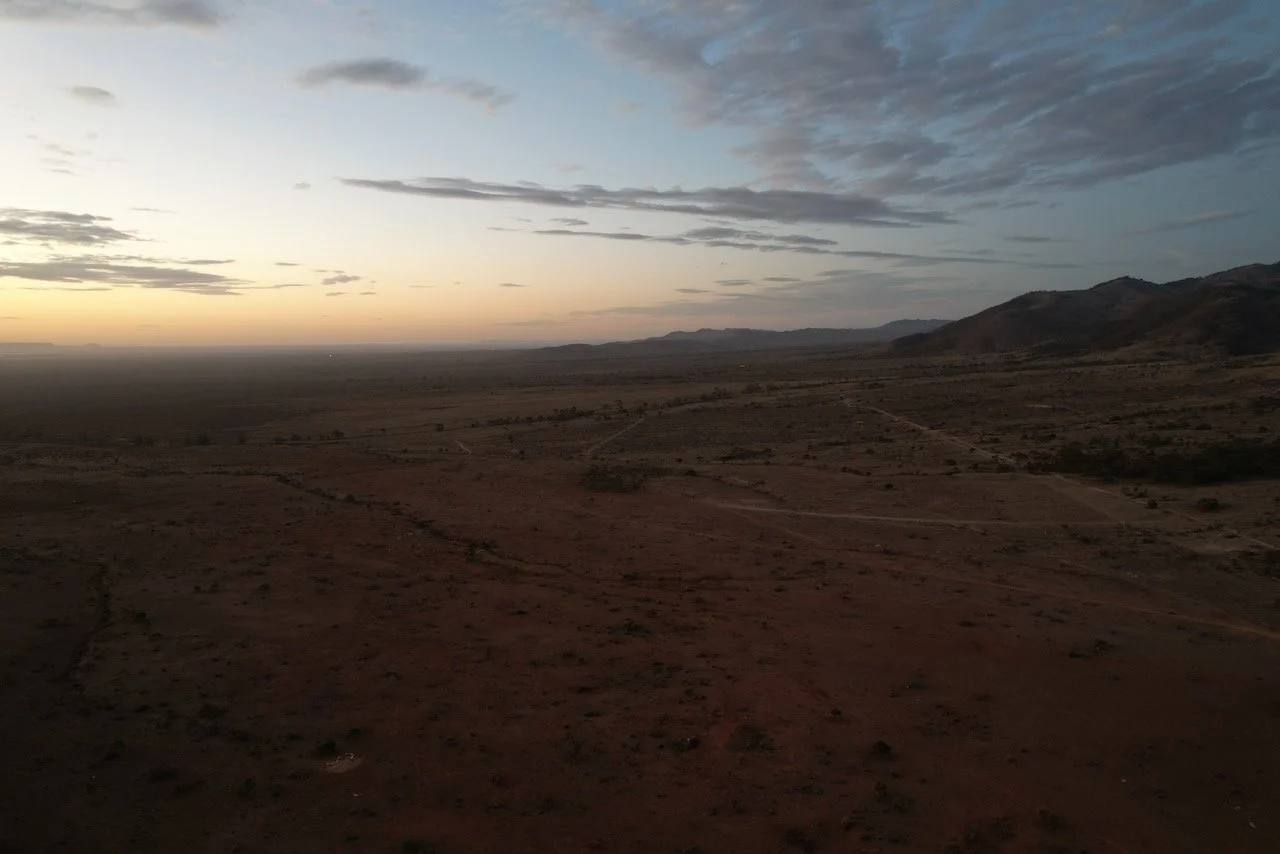

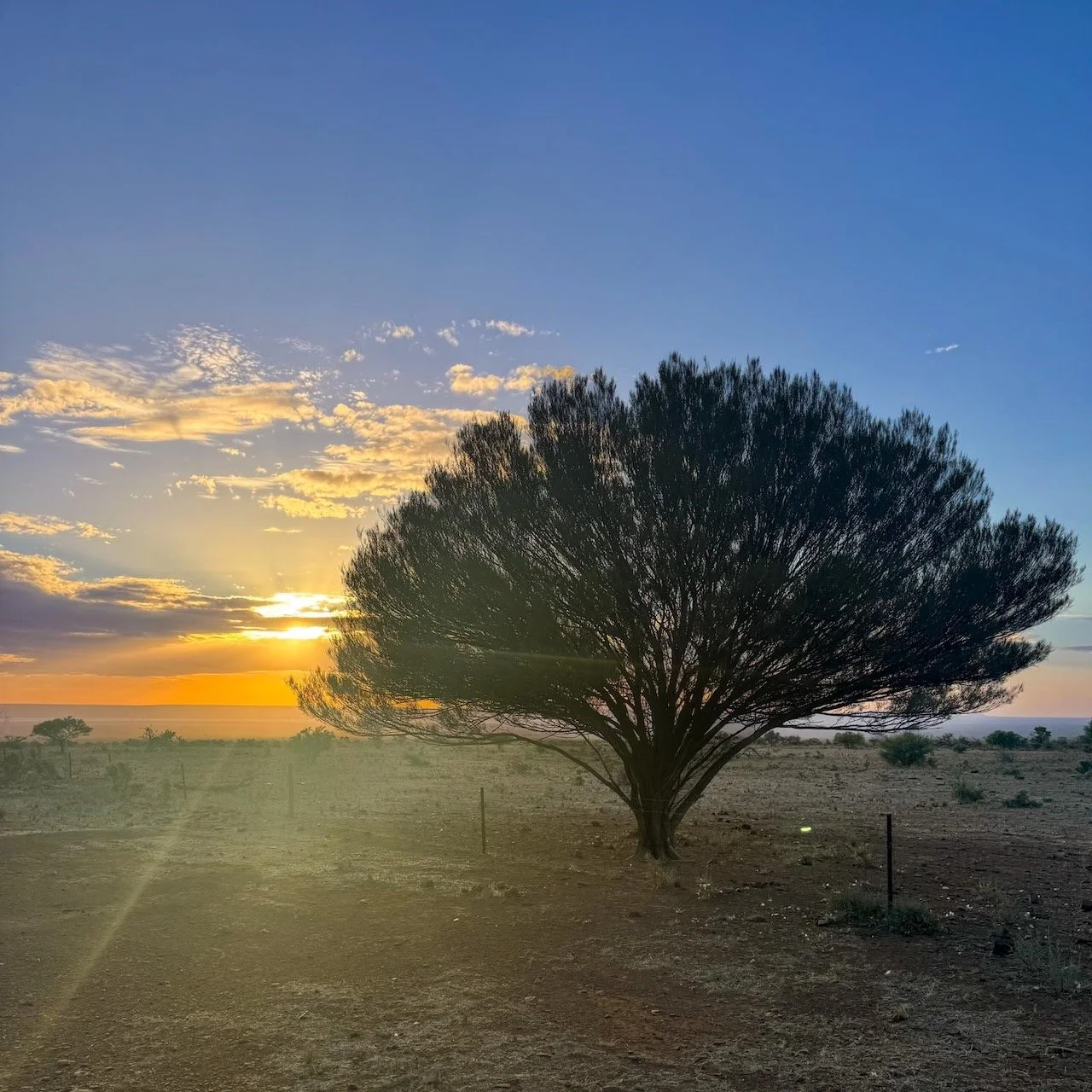
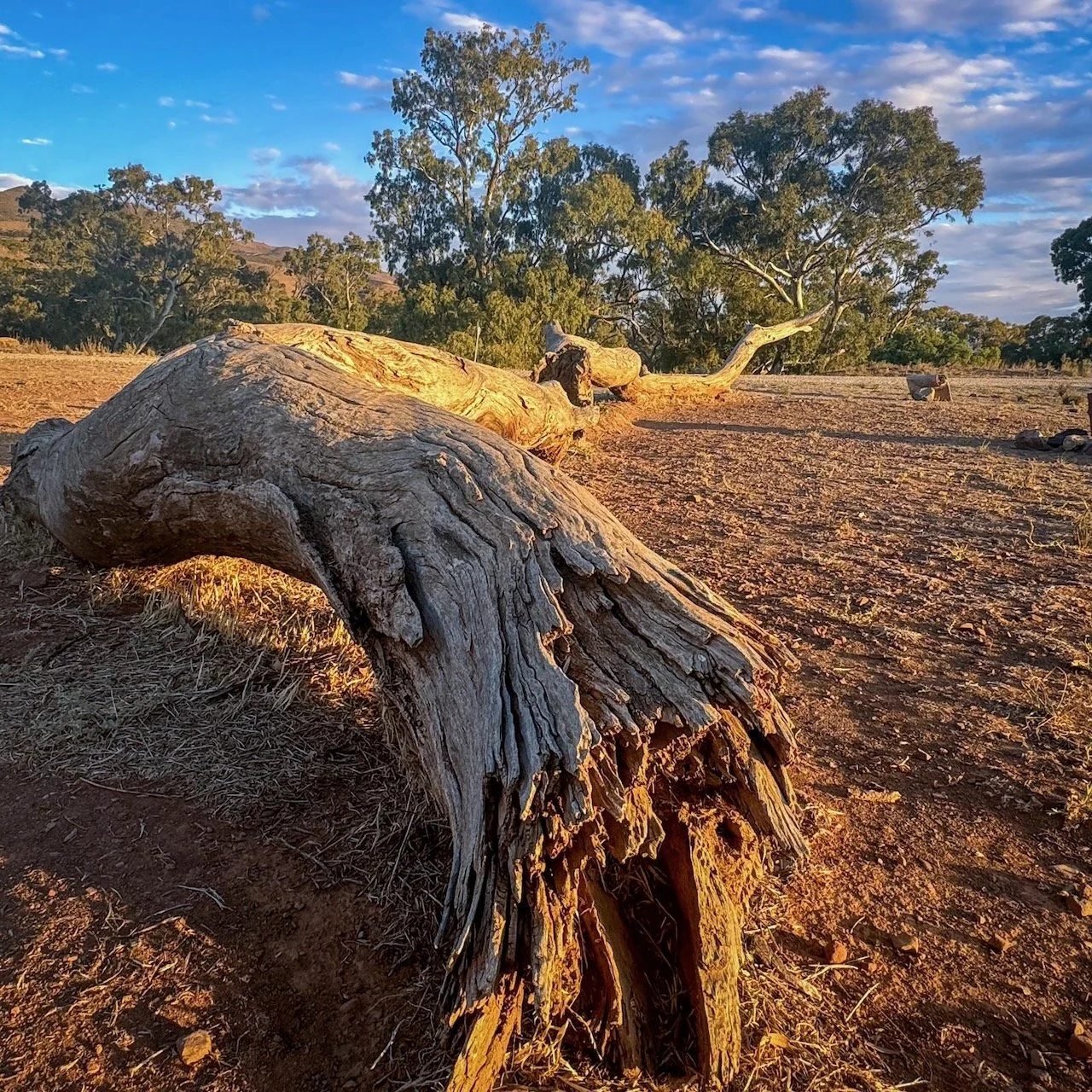
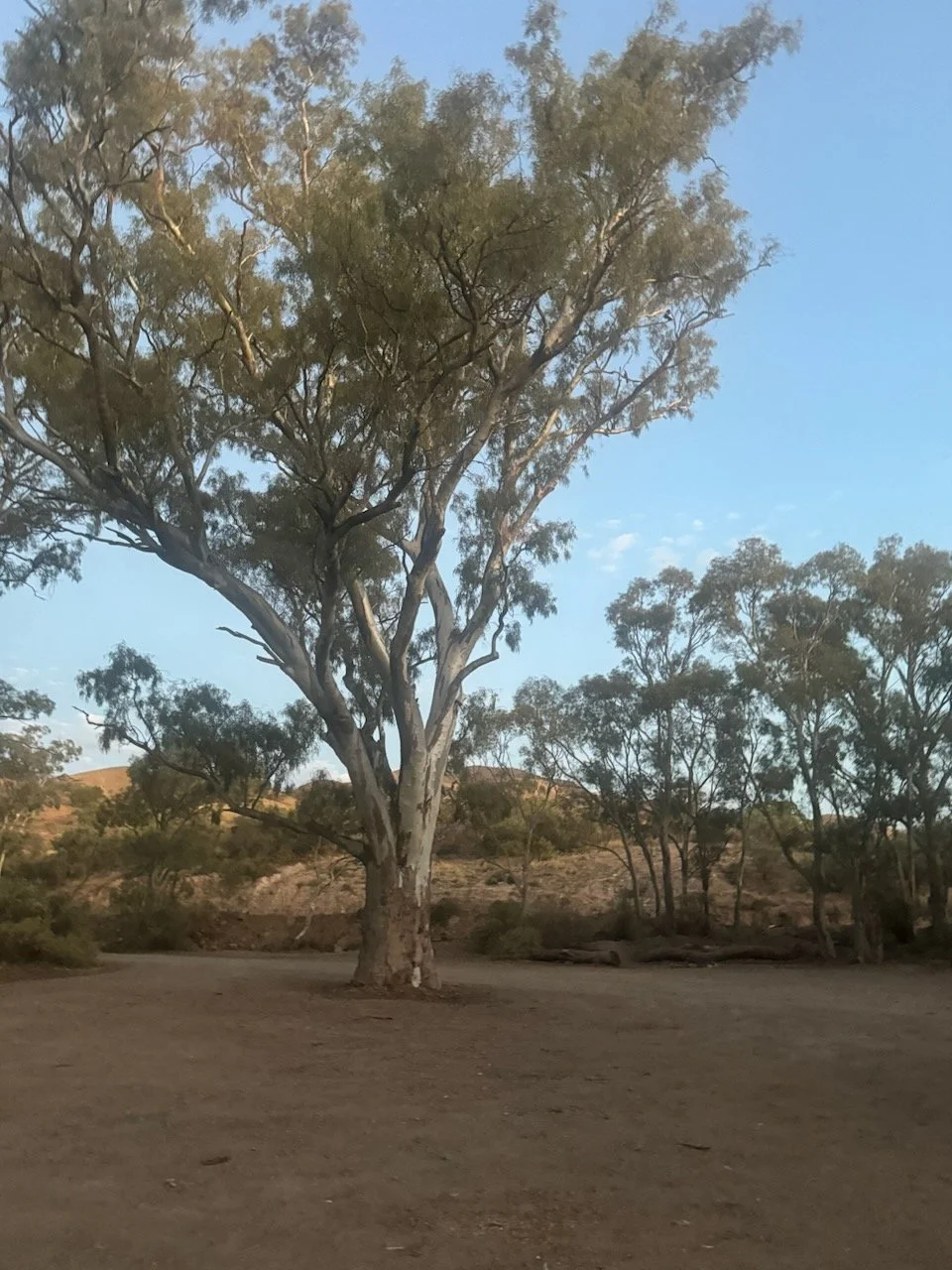
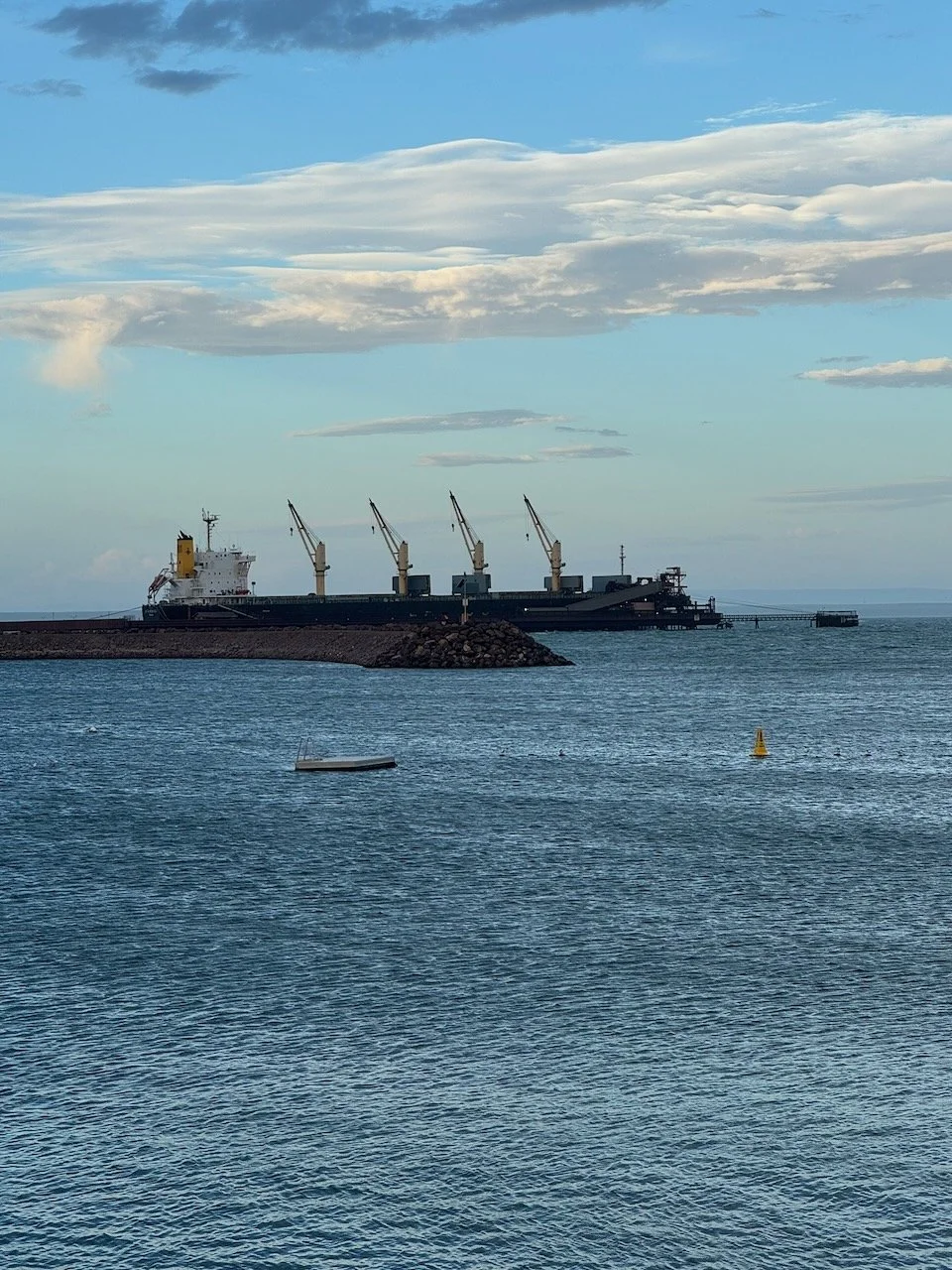

























At Lake Bonney in Barmera, we slowed down beside the water, swam, explored the ruins, and watched the sky melt into colour. A perfect Riverland stop where nothing much happens.. in the best way possible.